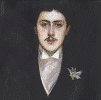Modern Languages and Literatures, Department of

French Language and Literature Papers
Document Type
Article
Date of this Version
September 1988
Abstract
Over the past twenty-five years, as readings of Flaubert's texts have become increasingly concerned with the definition of various narrative structures, the study of point of view has been inextricably tied to determining how his narratives generate (or, to some minds, subvert) meaning. Thus it is that almost all hermeneutical approaches have been concerned with point of view in one way or another, the procedure usually being to establish the principal or authoritative narrational axis (or perhaps a pseudo-authoritative one) and then to plot and analyze the departures from it. Point of view is not a new concern, of course, and has occupied readers of Flaubert for as long as there have been studies on style indirect libre and irony. Nor does this question originate in critical debate; Flaubert's manuscripts show him aware of changes in perspective.
Despite the excellent and numerous analyses of this topic already in print, we need to take a further look at point of view in La Tentation de saint Antoine. The reason is simply (and perhaps not surprisingly) that the preoccupation in Flaubert studies with structure is with narrative structure and that this has informed the discussion of a work that only partly qualifies as narrative. Given the theatrical origins of this text and the cross-fertilization that occurs in it between theatrical and narrative forms, this approach is too narrow. With respect to point of view particularly, little attempt has been made to look at the work's hybrid nature, at the structures inherited from the theatrical as well as from the novelistic sides of its parentage, in order to describe more clearly some of its fundamental characteristics.


Comments
Published in Nineteenth-Century French Studies, 17, Fall, 1988: 170-185. Copyright 1988 Nineteenth-Century French Studies.